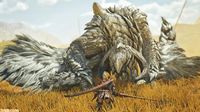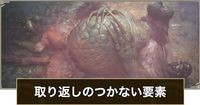In the world of gaming, few titles have captivated players quite like Monster Hunter Wilds, a game popular for its expansive open world and intense monster battles. However, players may be unaware that some elements within the game are irreplaceable, making certain choices critical. This article delves into these irreversible aspects, alongside ways to maximize enjoyment while avoiding frustration.
The first crucial aspect to consider is the platform on which players choose to engage with Monster Hunter Wilds. Players must be aware of that save data is stored separately for each platform, meaning transitioning from one system to another, such as from Steam to PS5, is not possible. Therefore, your initial choice of platform is vital and should not be made lightly.
Next, communication with NPCs (non-playable characters) presents its own set of challenges. During conversations, players will encounter various dialogue options. Once a player progresses past a dialogue selection, they are unable to revisit those options. If interesting choices arise, players should opt for the white dialogue options first before moving to the yellow options, which conclude discussions.
In Chapters 3 through 5 of the game, players face boss battles that, once defeated, cannot be replayed. This presents a significant challenge, especially for those wanting to experience the confrontation again or gather specific materials from these creatures. Players must be strategic about how they approach these battles because once defeated, the bosses are gone for good.
Furthermore, weapon enhancements present another irreversible decision. Unlike previous installments in the franchise, once a weapon is upgraded, the enhancement cannot be undone. This means players who mistakenly upgrade their weapons without careful thought may find themselves stuck with enhancements they did not want.
Additionally, players must pay attention to their player ID because this cannot be changed after the save data is created. The player ID is assigned at the moment of save data creation, leaving no room for later adjustments. For those who are meticulous about their in-game identity, this adds an extra layer of consideration when starting the game.
Conversely, there are elements within Monster Hunter Wilds that players can modify or undo, including character names and appearance. Players can revisit their character customization at the save data selection screen, contingent on having the necessary items such as Hunter's Makeover Tickets or Otomo's Makeover Tickets. But keep in mind, each ticket has purchase limits, meaning players should plan accordingly if they wish to make multiple modifications regarding their character’s appearance or identity within the game.
In terms of gameplay, the game design allows for certain aspects of character customization to be revisited at any time from designated points in the game, such as the base camp. Here, players can adjust hair, eyebrow shape, eye color, and other visual characteristics for their hunters. For the Otomo Ailu, modifications include design patterns, fur type, eye type, and tail type.
Another redeemable feature allows players to rewatch their story movie sequences from the Gallery on the title screen. If they miss crucial moments or wish to relive their favorite scenes, these can be watched again without penalty once the game has concluded.
Moving on, a vastly different angle within the game is the collection of decorations, an element that many players aim to perfect. The most efficient way to gather decorations involves completing 2-monster hunting quests, which can yield more than 15 decorations per quest, particularly from higher-difficulty missions. These quests provide additional rewards and can aid in leveling players' Hunter Rank (HR), which is important as HR unlocks further game elements.
The article recommends reaching at least Chapter 6-1 for optimal decoration collection efficiency. Some missions require players to hunt two Hirabami, a process that players are advised to approach strategically. Completing the side missions available in the various maps will also enable players to undertake dual monster quests, which enhance resource collection.
After mission completion, players can return to their My Tents camp to reset their quest options. It’s advisable to continue attempting to secure favorable quest outcomes by waiting for quality reward quests.
A key factor in collecting necessary resources, like One Night Flower’s Moonflower Powder, involves clearing the story to a certain point. Players can set up camps in specific areas, rest until evening, quit the game, and restart it to ensure a full moon for optimal item collection. These resources can then be exchanged with the NPC 'Secca' for Gold Tempering Tickets, which are essential for tempering decorations.
Players interested in building efficient decoration collections should maximize the benefits of the Adventurer’s Tempering Art. This process can yield random high-performance decorations, including compound decorations that encompass two skills, contingent on completion of a specific chapter and achieving the required player rank. The ultimate aim for players is to gather effective decorations that complement their armor and weapon sets.
To get the most out of their time in Monster Hunter Wilds, players should focus on effective strategies for both irreversible choices and decoration collection. By understanding the elements within the game that cannot be undone and harnessing the potential for customization, players can truly enhance their gaming experience.






